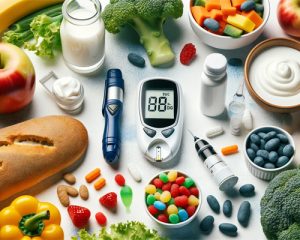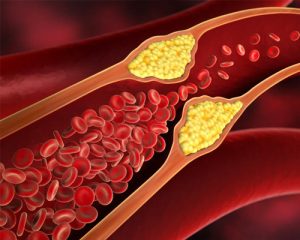Cholesterol is often questioned in the sense that it is a compound called a substance and serves a number of functions in the male condition but leads to varied degrees of ill health when it becomes unbalanced. This focuses specifically on the concerns of heart health as it relates to the adults High-Density Lipoprotein (HDL) and Low-Density Lipoprotein (LDL) cholesterol. Definitions, the types of cholesterol and the methods of measurement, risk factors, and lifestyle changes that can be made to maintain healthy levels of cholesterol will be discussed.
 1. Definition
1. DefinitionCholesterol is a waxy, fat-like substance that is found in every cell of the body. It is essential for producing hormones, vitamin D, and substances that help digest foods. Cholesterol is carried in the bloodstream by lipoproteins. Naturally, the body makes all the cholesterol it needs; dietary sources also provide some cholesterol.
HDL cholesterol has frequently been called “good” cholesterol because it is protective for the heart and transports cholesterol away from the arteries and back to the liver, where it is processed and removed from the body. Higher levels of HDL are associated with a lower risk of developing heart disease.
LDL cholesterol is sometimes referred to as “bad” cholesterol. It binds to the cells for use but gets excessive in the blood; as a result, excessive amounts lodge within the arteries and create cholesterol buildups. This condition is termed atherosclerosis, which risks narrowing blood vessels and causing heart diseases and stroke.
Cholesterol levels are known to be evaluated by a blood test often referred to as a lipid panel. The results give you the following measurements: total cholesterol, high-density lipoprotein (HDL), low-density lipoprotein (LDL), and triglycerides. The following guidelines indicate the normal cholesterol levels in adults:
Several aspects can determine cholesterol levels and predispose an individual to heart disease:
 5.1 Healthy Diet
5.1 Healthy DietAdopt a heart-healthy diet that includes
Regular Exercise Physical activity should be at least 150 minutes every week of moderate-intensity aerobic exercise to increase HDL cholesterol levels and lower LDL cholesterol levels. Walking, cycling, swimming, and jogging fall under this exercise category.
Practicing healthy weight management could fall in the range of posting LDL and triglycerides while raising HDL cholesterol. Even losing a few pounds may affect cholesterol levels to an extent.
Quitting smoking will raise HDL levels while also assisting in enhancing heart health via blood pressure and circulation improvement.
Periodic screening for cholesterol enables one to trace the levels and the risk factors associated with it. A normal-risk adult-age should at least be screened once every four months for an up to six-year timeline.
Cholesterol is a very important factor for everyone in their overall health, especially related to how heart employs it in overall functioning. One should understand the difference of HDL and LDL cholesterol and the need for their important balance for prevention against heart disease. But all these measures are possible with healthy lifestyle changes like diet improvement, increase physical activity, reduce tobacco smoke, making many changes in adults towards their cholesterol levels and thus improve overall health.
This above chart will serve as a perfect reference point that clears the measurements of cholesterol levels into meaningful implications toward heart health.